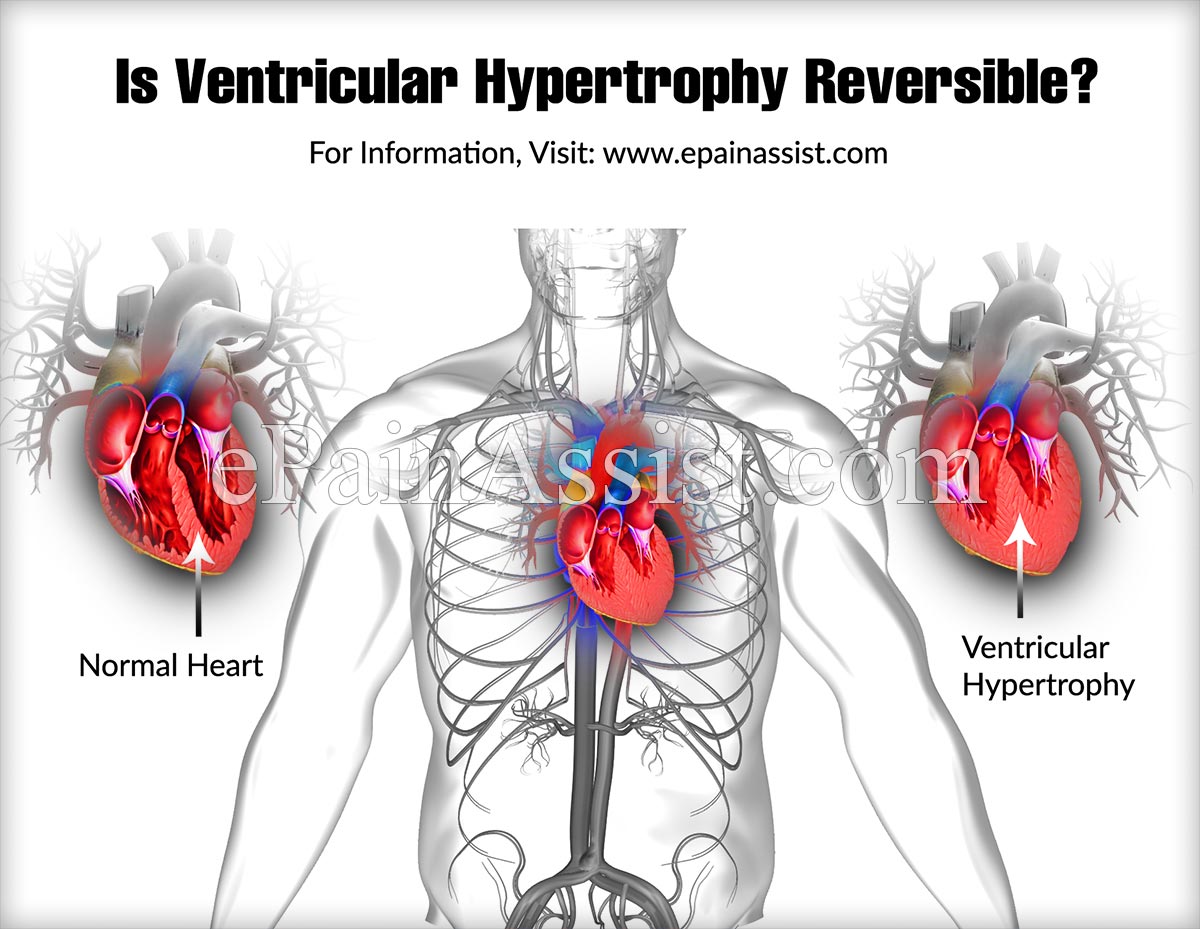Heart is made up of four chambers, namely, right atrium, left atrium, right ventricle and left ventricle. Both the atria form the upper chambers and both the ventricles form the lower chambers of the heart. Hypertrophy is the enlargement of muscles due to various reasons. Ventricular hypertrophy is the enlargement of the lower chambers of the heart, namely, right ventricle and left ventricle. Left ventricular hypertrophy is more common than right ventricular hypertrophy. In addition, both the ventricles can also enlarge at the same time, known as, biventricular hypertrophy.

Is Ventricular Hypertrophy Reversible?
Whether ventricular hypertrophy is reversible or not depends on the cause of ventricular hypertrophy and its treatment. Although, there is no treatment aimed to reduce the thickness of the walls of the ventricles directly; however, the treatment is aimed at treating the cause of ventricular hypertrophy. For e.g. ventricular hypertrophy secondary to hypertension is partially reversed with the help of blood pressure medications (beta-blockers, angiotensin-converting enzyme inhibitors or angiotensin receptor blockers) and lifestyle modifications along with prevention of risk factors. There is no treatment required for athletic hypertrophy; the individuals only need to discontinue exercise for few months and their heart size will be reduced. This can be noted in an echocardiogram. In some cases, surgery can also be opted for to treat the underlying cause of ventricular hypertrophy.
How Does Ventricular Hypertrophy Occur?
Ventricular hypertrophy can occur either due to pathological reasons or due to physiological reasons. Hypertrophy due to pathological reasons is known as concentric hypertrophy, whereas, hypertrophy due to physiological reason is known as eccentric hypertrophy. Ventricular hypertrophy occurs due to increased stress/pressure in the heart, in which there is addition of contractile units of cardiac cells (sarcomeres), either parallel or in series to the existing ones. Sarcomeres are added parallel in concentric hypertrophy, in which there is no increase in the radius of the ventricle. This type of hypertrophy is maladaptive, can result in stiffness of the ventricle, and can lead to areas of ischemia in heart. This is a compensatory mechanism for sometime; however, eventually it can lead to heart failure. This mostly occurs in chronic hypertension or aortic valve stenosis.
Sarcomeres are added in series in eccentric hypertrophy, in which there is increase in the radius of the ventricle, in addition to the volume overload. This type of hypertrophy is seen in athletes or pregnant women in which there is increased blood return to the heart during exercise or there is an increase in heart blood volume.
Left Ventricular Hypertrophy
Left ventricular hypertrophy (LVH) is the thickening of the heart muscle of the left side of the ventricle. LVH is a result of increased workload in the left ventricle, for e.g., due to hypertension, aortic valve stenosis, athletic hypertrophy, congenital heart disease, valvular disease and hypertrophic cardiomyopathy. The risk factors of left ventricular hypertrophy include diabetes, old age, obesity and a positive family history. It can be diagnosed in both electrocardiogram and echocardiogram.
Right Ventricular Hypertrophy
Right ventricular hypertrophy is the increased thickness of the right side of the ventricle. RVH is a result of increased workload in the right ventricle, for e.g., due to either congenital conditions or pulmonary causes. It includes pulmonary hypertension, pulmonary embolism, emphysema, chronic obstructive pulmonary disease, pulmonary fibrosis, sarcoidosis, pulmonary valve stenosis, sleep apnea, tetralogy of Fallot, cardiac fibrosis and chronic anemia (iron deficiency anemia, folate or vitamin B12 deficiency anemia, sickle cell anemia or thalassemia). The risk factors of right ventricular hypertrophy include smoking, sleep apnea and strenuous activity. The definitive diagnosis may require cardiac MRI apart from electrocardiogram and echocardiogram.
Symptoms of Ventricular Hypertrophy
The symptoms of concentric ventricular hypertrophy include chest pain with or without exertion, shortness of breath, fatigue, syncope, tachycardia, edema and heart palpitations. Eccentric hypertrophy may show little to no signs of hypertrophy, apart from tachycardia, since it is a healthy response to increased demand.
Also Read:
- Tonsillar Hypertrophy: Causes, Symptoms, Treatment- Antibiotics, Tonsillectomy Surgery
- Adenoid Hypertrophy: Causes, Symptoms, Treatment
- What is Turbinate Hypertrophy?
- Turbinate Hypertrophy: Causes, Symptoms, Diagnosis
- Turbinate Hypertrophy: Treatment, Surgery, Home Remedies, Prognosis
- What is Nasal Turbinate Hypertrophy & How is it Treated
